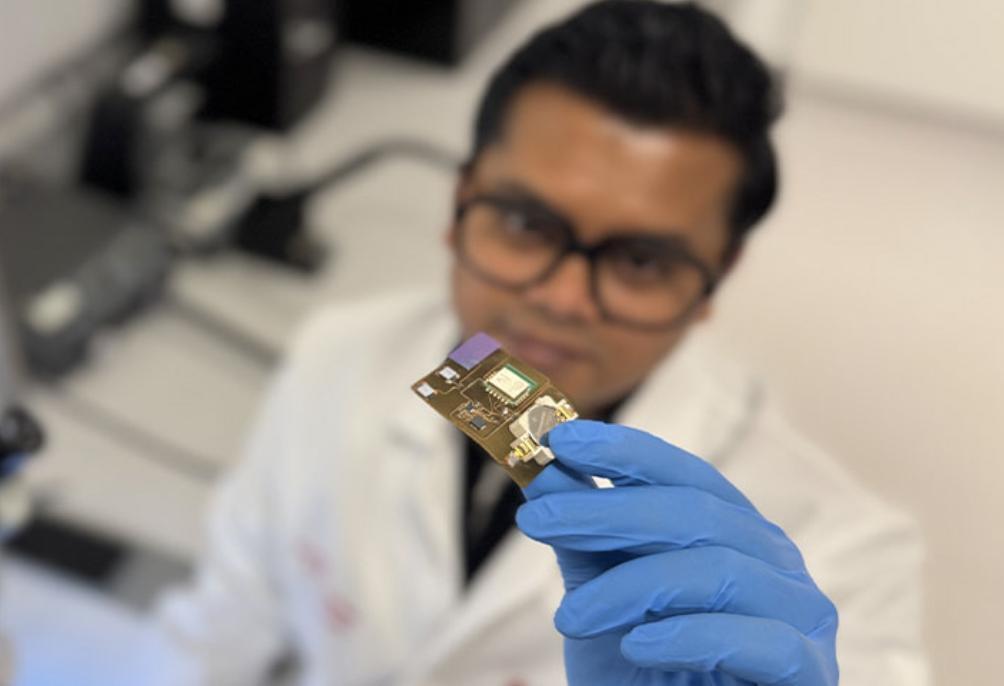
Wearable Wound Sensors to Monitor Healing Discovered
The world of wound care has taken a significant leap forward with the development of wearable wound sensors that can track the healing process remotely. These innovative sensors, priced at just $5, are wireless, Bluetooth-enabled, and can be placed on or next to a wound under dressings, providing real-time monitoring of the healing process.
Traditional methods of wound care require frequent dressing changes and physical contact, which can be inconvenient, painful, and even increase the risk of bacterial exposure. The new wearable wound sensors aim to revolutionize this process by providing a more efficient, effective, and patient-friendly solution.
The sensors, developed by researchers, track three key parameters that are critical to wound healing: temperature, pH, and inflammation. By monitoring these parameters, the sensors can detect infection early on, allowing for prompt treatment and reducing the risk of chronic infection.
The sensors are made from biocompatible materials that can be molded to fit curved surfaces, making them suitable for placement on or next to wounds on the arms, legs, or other areas of the body. This flexibility allows for a more comfortable and convenient monitoring experience for patients.
The benefits of wearable wound sensors are numerous. For patients, it means reduced discomfort and inconvenience associated with frequent dressing changes, as well as reduced exposure to bacteria. For healthcare professionals, it means faster detection of infections, which can lead to more effective treatment and better patient outcomes.
Chronic infections are a significant problem in wound care, often requiring prolonged hospital stays and extensive treatment. The wearable wound sensors have the potential to improve chronic infection care by providing early detection and prompt treatment. This can lead to reduced healthcare costs, fewer hospitalizations, and improved patient quality of life.
The development of wearable wound sensors is a significant breakthrough in the field of wound care. It has the potential to transform the way we monitor and treat wounds, making the process more efficient, effective, and patient-centered.
How Wearable Wound Sensors Work
The wearable wound sensors use advanced sensors and algorithms to track temperature, pH, and inflammation in real-time. These parameters are critical to wound healing, as changes in any of these can indicate infection or other complications.
Temperature monitoring is particularly important, as changes in temperature can indicate infection or inflammation. The sensors can detect even small changes in temperature, allowing for early detection of potential infections.
pH monitoring is also critical, as changes in pH can indicate the presence of bacteria or other pathogens. The sensors can detect changes in pH, allowing for prompt treatment and reducing the risk of chronic infection.
Inflammation monitoring is also important, as excessive inflammation can impede the healing process. The sensors can detect changes in inflammation, allowing for prompt treatment and promoting a healthy healing environment.
Conclusion
The development of wearable wound sensors is a significant breakthrough in the field of wound care. These innovative sensors have the potential to transform the way we monitor and treat wounds, making the process more efficient, effective, and patient-centered.
With their ability to track temperature, pH, and inflammation in real-time, wearable wound sensors can detect infection early on, reducing the risk of chronic infection and improving patient outcomes. Made from biocompatible materials and designed to fit curved surfaces, these sensors are comfortable, convenient, and easy to use.
The potential benefits of wearable wound sensors are numerous, from reduced discomfort and inconvenience for patients to improved detection and treatment of chronic infections for healthcare professionals.
As the wearable wound sensor technology continues to evolve, it is likely to have a significant impact on the field of wound care, improving patient outcomes and reducing healthcare costs.
Source
https://anmj.org.au/wearable-wound-monitoring-device-could-improve-chronic-infection-care/






